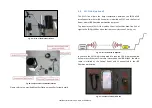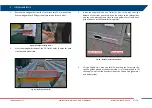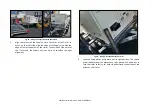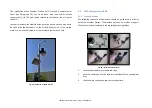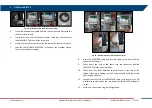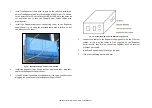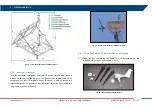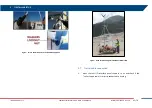
5
FIRST ArcSAR SETUP
IDS GeoRadar S.r.l.
Confidential Information - Do Not Distribute
MNG/2017/0016 Rev 1.0 33/ 78
Fig. 60 – Installation steps (2/3)
4.
make sure the wind cups are not loose;
5.
tighten the set of screw with the Allen wrench provided. Try to spin
the wind cups. They should spin freely;
6.
insert the anemometer arm into the base, sliding the cable through
the notch in the base as shown in the figure;
Fig. 61 – Installation steps (3/3)
7.
make sure to align the small hole in the arm with the holes in the
base;
8.
insert the machine screw through the holes in the base and arm;
9.
slide the tooth-lock washer and hex nut onto the machine screw.
Tighten the hex nut while holding the screw with a Phillips head
screwdriver to prevent it from turning;
10.
press the sensor cable firmly and completely into the zig-zagging
channel in the base, starting from the arm and progressing
downward to the bottom of the base. Make sure to press the cable
into the channel at the bottom of the grove;
11.
fix the Weather Station on the provided pole or something similar.
This can be performed using the anchoring elements provided, or
simply by using cable ties.
The anemometer arm should be pointing North in order to obtain the right
values in terms of wind direction.
Fig. 62 – The Weather Station can be easily fixed to a pole using cable ties
Using cable ties represent a valuable solution easily adaptable to different
poles or situations but in some cases, the anchoring elements provided can
be used instead. Hence, you will need to remove first the rain gauge funnel
as it is shown in the






